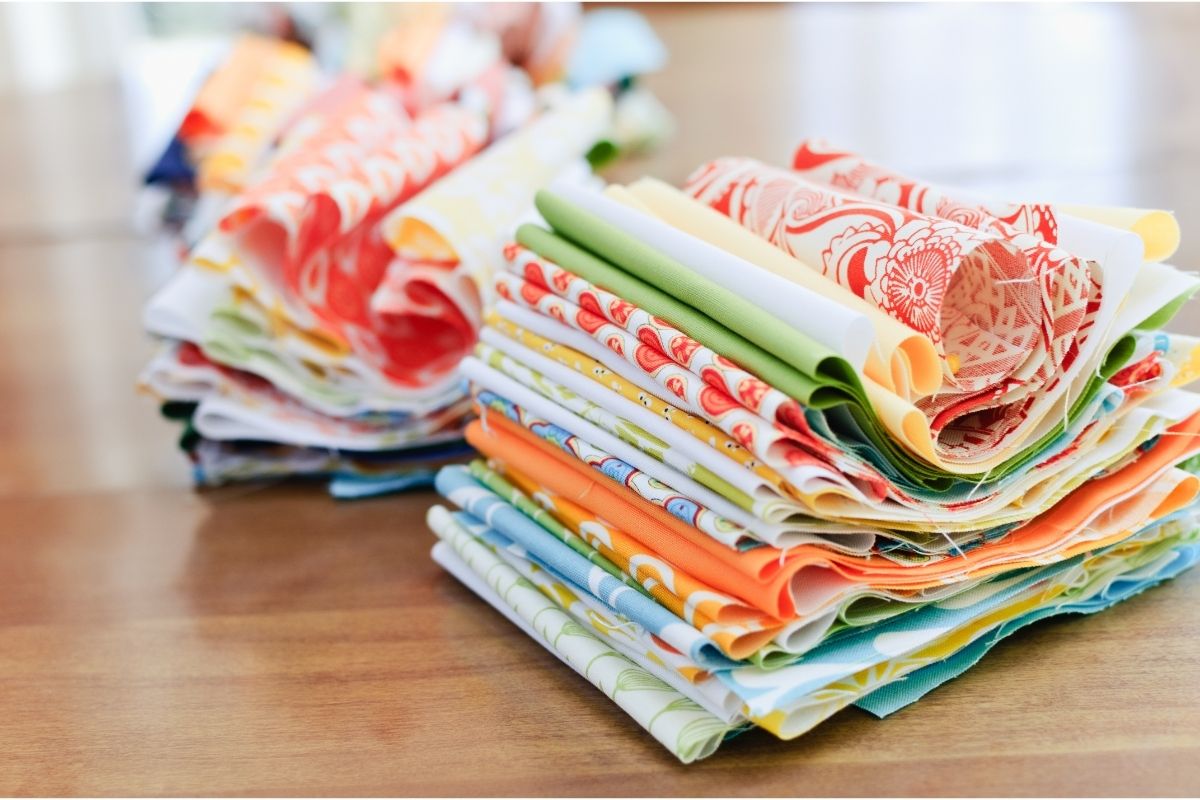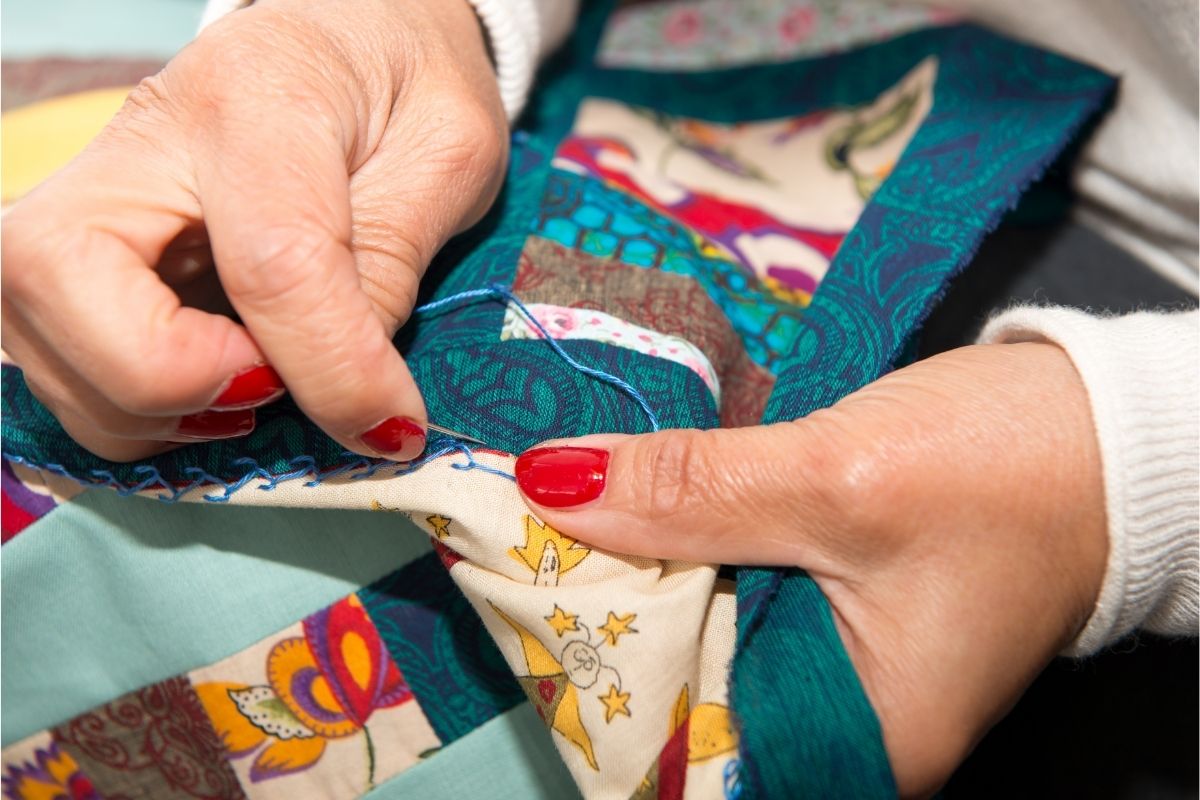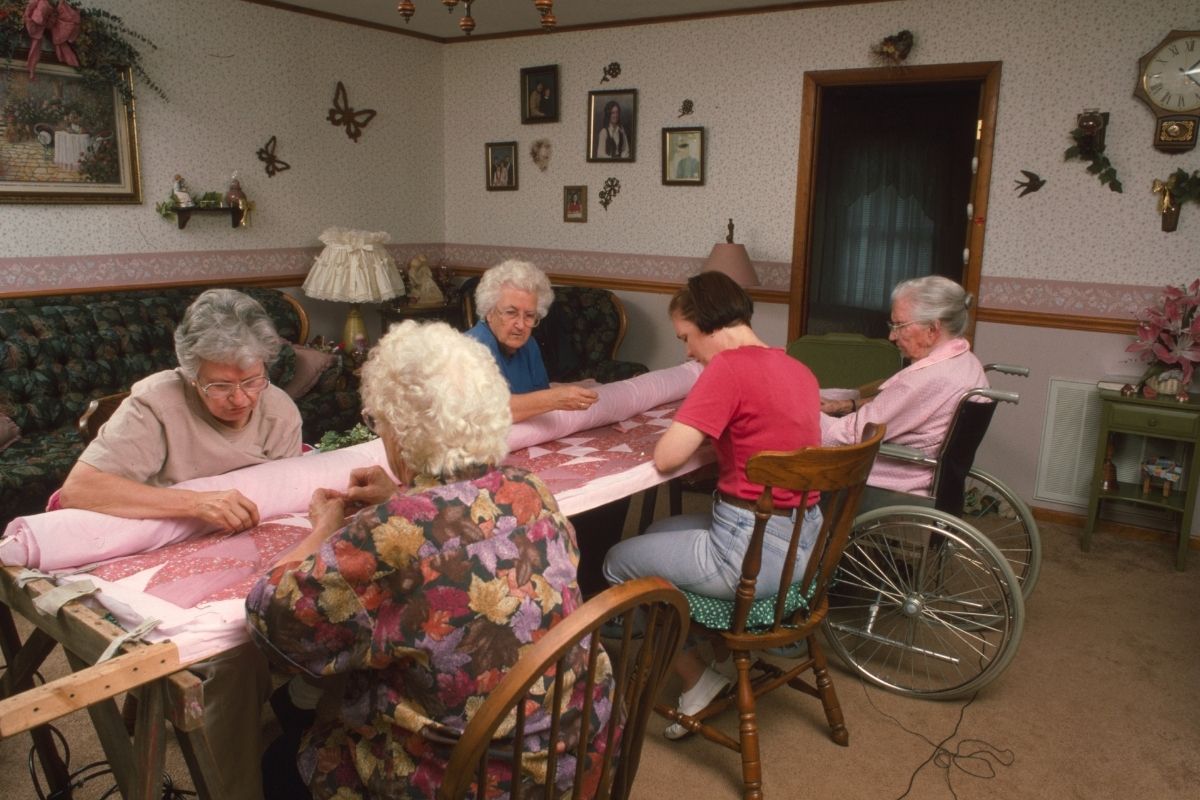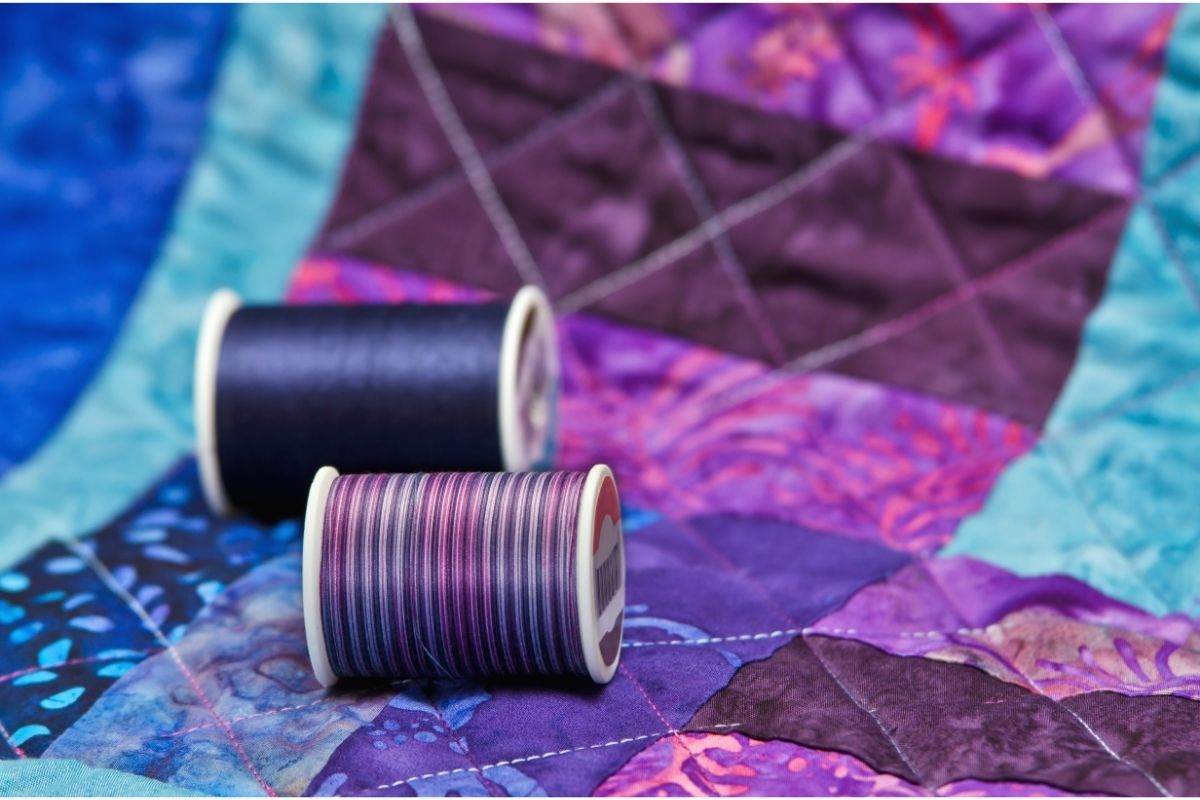Squaring up a quilt is a common task for quilters, but it can be a challenging task, especially for those who are new to the quilting scene.
In this article, we are going to be looking at a simple and efficient way to square up a quilt.
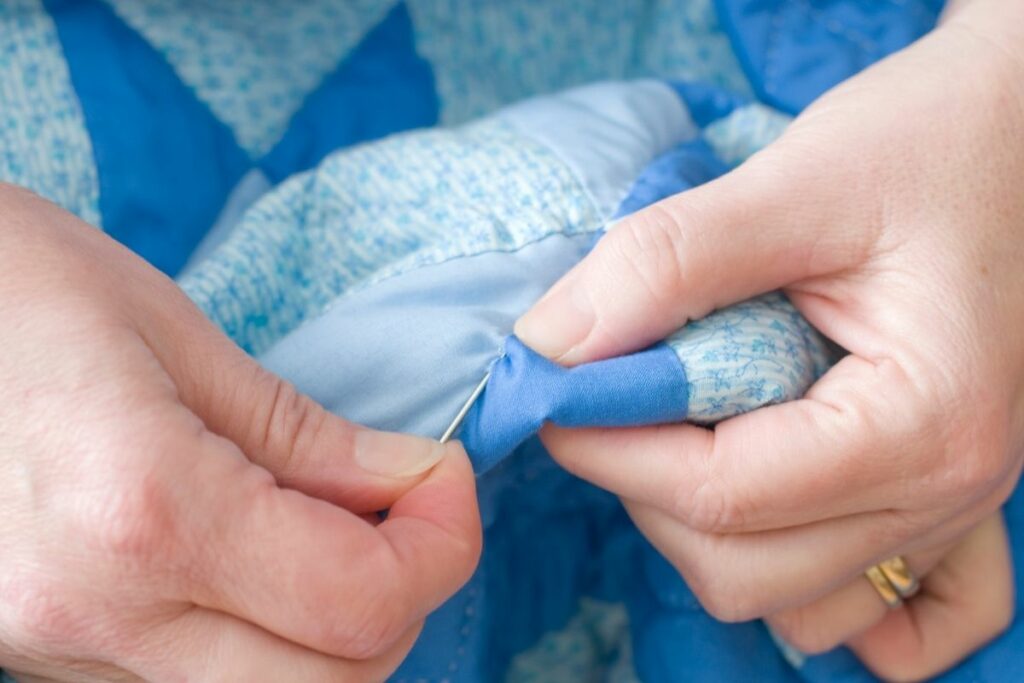
First off, let’s take a look at what quilting is in general and what it means to square up a quilt.
What Is Quilting?
Quilting refers to the process of stitching together fabric pieces into a cohesive whole. This can include sewing together multiple layers of fabric or using thread to stitch through the layers of fabric.
The end result is a piece that has been stitched together with purposeful intent.
Quilting is an incredibly versatile art form. It is used to create everything from clothing to home décor items.
There are many different types of quilts including wall hangings, table runners, bedding, pillows, etc.
The most basic type of quilting is appliquéing. Appliqué involves cutting out shapes from pre-cut fabrics and then stitching them onto another layer of fabric.
For example, if you wanted to make a patchwork pillow, you would cut out squares from your fabric and sew them on top of a backing fabric.
The next level of quilting is called hand piecing. Hand piecing is similar to appliquéing, except instead of cutting out shapes, you use small pieces of fabric and stitch them together by hand.
The final level of quilting uses machine piecing. Machine piecing is done entirely by machine. You simply feed one piece of fabric into the machine and press down the foot pedal.
Then you feed another piece of fabric into the same machine and repeat until all the pieces have been sewn together.
There are other forms of quilting too, such as cross-stitch, embroidery, needlepoint, etc.
What Does It Mean to Square Up a Quilt?
Squaring a quilt refers to making sure that the edges of the quilt are straight and even. If you want to learn more about how to square up a quilt, keep reading!
When you are working on a quilt project, there will come a time when you need to square up the edges of your workpiece.
This is usually necessary because you want to ensure that the finished product looks nice and neat.
When you first start working on a quilt, you may not know how to square up a quilted object. If you don’t know how to square up your quilt, here is a quick guide:
- Start by laying out the entire quilt on a flat surface. Make sure that the quilt is laid out so that the center of the quilt is aligned with the edge of the table.
- Next, lay out each individual block of fabric on the table. Lay out each block so that the center of each block is aligned with the edge.
- Once you have laid out all the blocks, check to see if they are evenly spaced. If any of the blocks are unevenly placed, adjust them accordingly.
- Now that you have adjusted the placement of the blocks, it is time to trim away excess fabric from around the edges. Use scissors to carefully trim away any extra fabric.
- After you have trimmed away the excess fabric, it is now time to measure the distance between the two points where the fabric meets. These measurements should be equal in length.
- Using a ruler, draw lines along these measuring marks. With a pencil, mark the lines on both sides of the quilt.
- Now that you have marked the lines, take a pair of scissors and carefully snip off the fabric along the lines.
- Finally, fold the quilt in half. This will help you align the edges of the quilted object.
How Do I Know If My Quilt Is Square?
To determine whether, or not, your quilt is square, you can use an inexpensive tool that measures the angles at which the four corners meet. This type of tool is known as a protractor.
To find out if your quilt is square or not, follow this simple process:
- Lay the quilt out on a flat surface.
- Take a protractor and place it over the corner of the quilt. Measure the angle formed by the top point of the protractor and the bottom point of the protractor.
- Repeat Step 2
- If the angle measured is 90 degrees, then your quilt is square. If the angle measured is less than 90 degrees, then your piece of fabric needs to be squared up.
- If you are having trouble determining whether, or not, your quilting project is square, you may want to consider using a professional quilter. Professional quilters are trained to make sure that their projects are perfectly square before sewing. They also know how to properly set up a quilting machine.
Finishing a Squared Up Quilt
There are several ways to finish a squared-up quilt. You can choose whichever method works best for you. Here are some common finishing methods:
- Stitch down the seam allowances.
- Trim the raw edges of the quilt.
- Sew binding to the backside of the quilt.
What Materials Do You Need For Quilting?
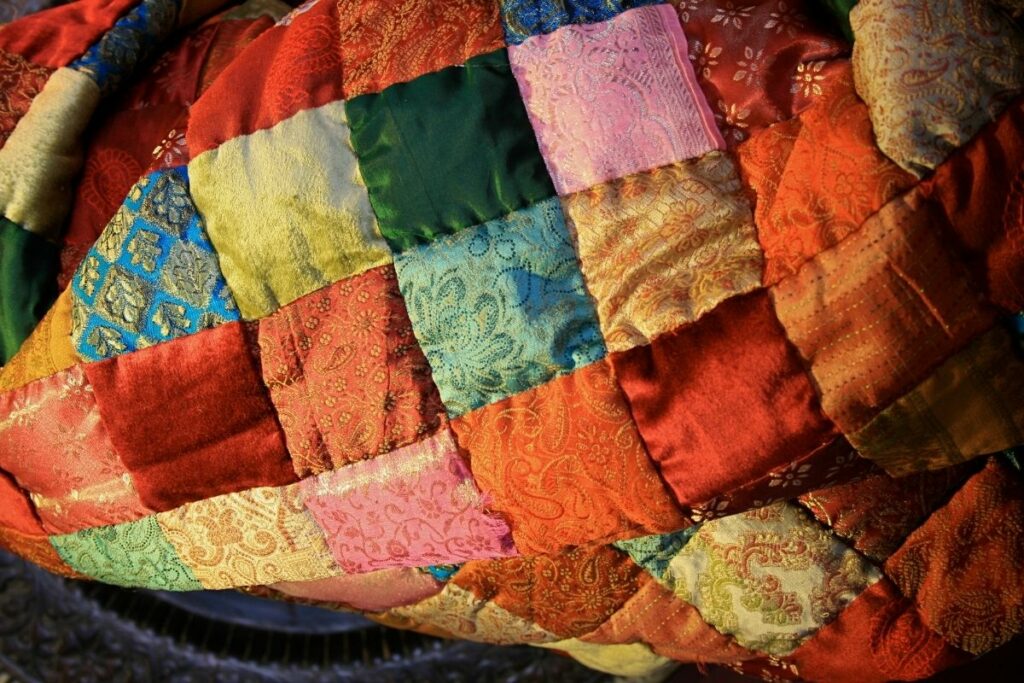
You will need several items when you are starting out learning how to quilt. The following list includes some of the basic materials you will need for your quilting journey.
Fabric
This is what you will actually be stitching onto. If you are planning to make a wall hanging, then you will need at least one yard of fabric. If you are planning on making a throw pillow, then you will need more than one yard of fabric.
Thread
Choose a color combination that works well together. It’s always good to mix colors, especially when you are working on a small project like a throw pillow or a baby blanket.
Pins
Use long-shafted pins. They are easier to handle and less likely to poke holes into the fabric.
Sewing Machine
Sewing machines come in various sizes and shapes. However, if you are just getting started, you should get a simple model. These models are easy to learn, and they don’t cost much money.
Quilter’s Chalk
This chalk helps you to accurately measure your stitches.
Sewing Machine Cover
This cover protects your sewing machine during storage.
Cutting Mat
This mat allows you to easily cut straight lines without having to worry about cutting yourself.
Basting Spray
Basting spray is great for temporarily holding pieces of fabric in place while you are stitching them together.
Scissors
Scissors are essential tools for any seamstress. Make sure you have sharp blades so that you can cut cleanly and neatly.
Iron
An iron is another important tool for any seamstress. You can use an iron to press seams flat and smooth.
Supplies For Squaring Up A Quilt
When it comes to squaring up your quilt, there are several materials that will be of help to you. Here is a quick guide to the supplies that you will need:
Straight Edge
A straight edge is a helpful tool for measuring and marking your squares. You can find these tools at craft stores.
Tape Measure
Tape measures are useful for determining the size of your blocks.
Tape Cutter
Tape cutters are used to cut tape into different lengths.
Marker
Markers are handy for drawing guidelines on your fabrics.
Pencil
A pencil is another helpful tool for sketching designs on your fabric.
Final Thoughts
Now that you know how to square up a quilt, you may want to take this skill further by creating your own unique patterns. By combining different techniques, you can create beautiful quilts with interesting designs.
In addition, you can even combine different materials such as wool and cotton to create stunning quilts. Learning how to square up a quilt is a fun and rewarding experience.
There are many ways to do this, but we hope that our tips and tricks have helped you along the way!
- How to Cut Quilt Pieces - April 25, 2022
- Your Simple Guide To Quilt Sizes - April 25, 2022
- How To Join A Quilt With Diagonal Seam - April 25, 2022


